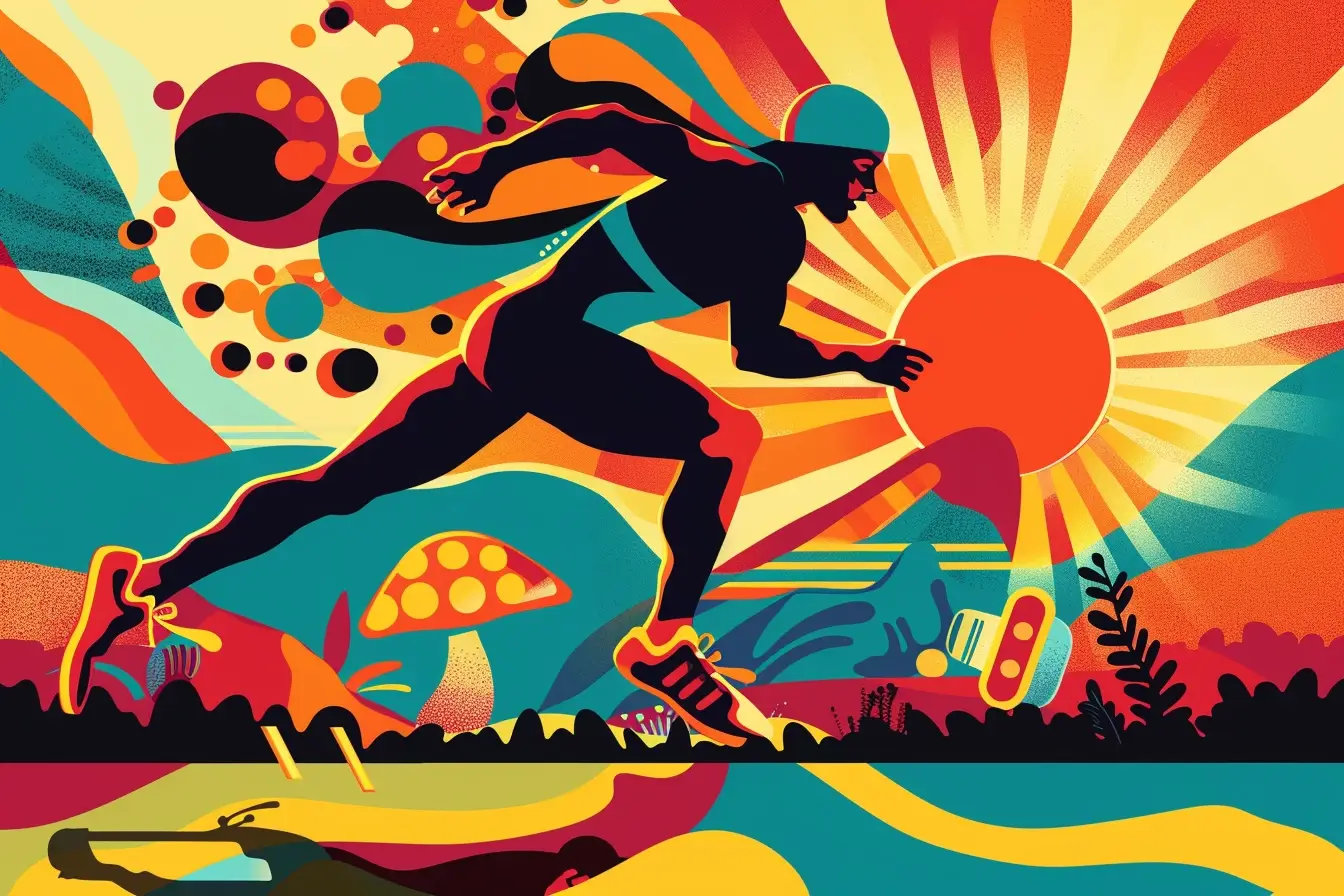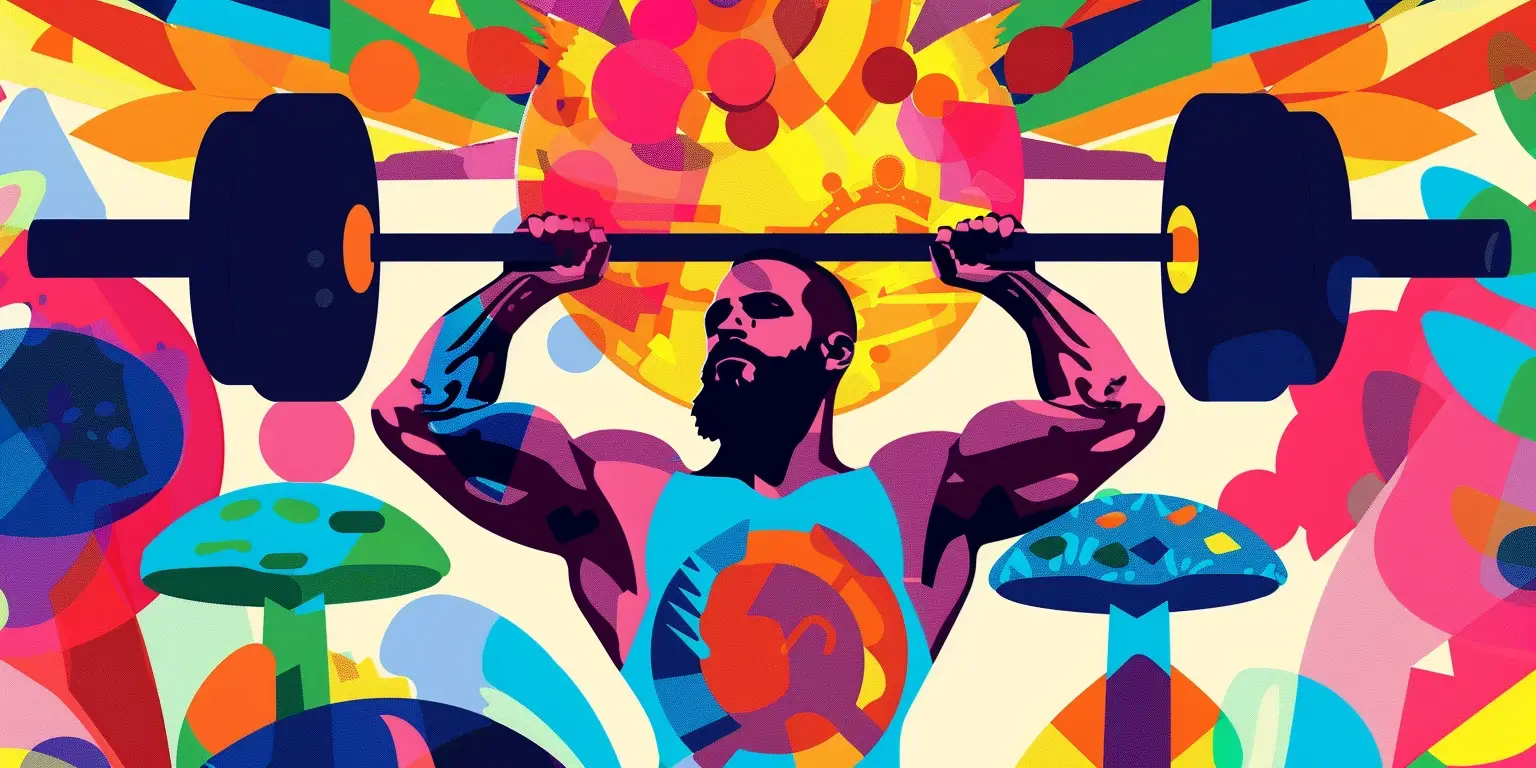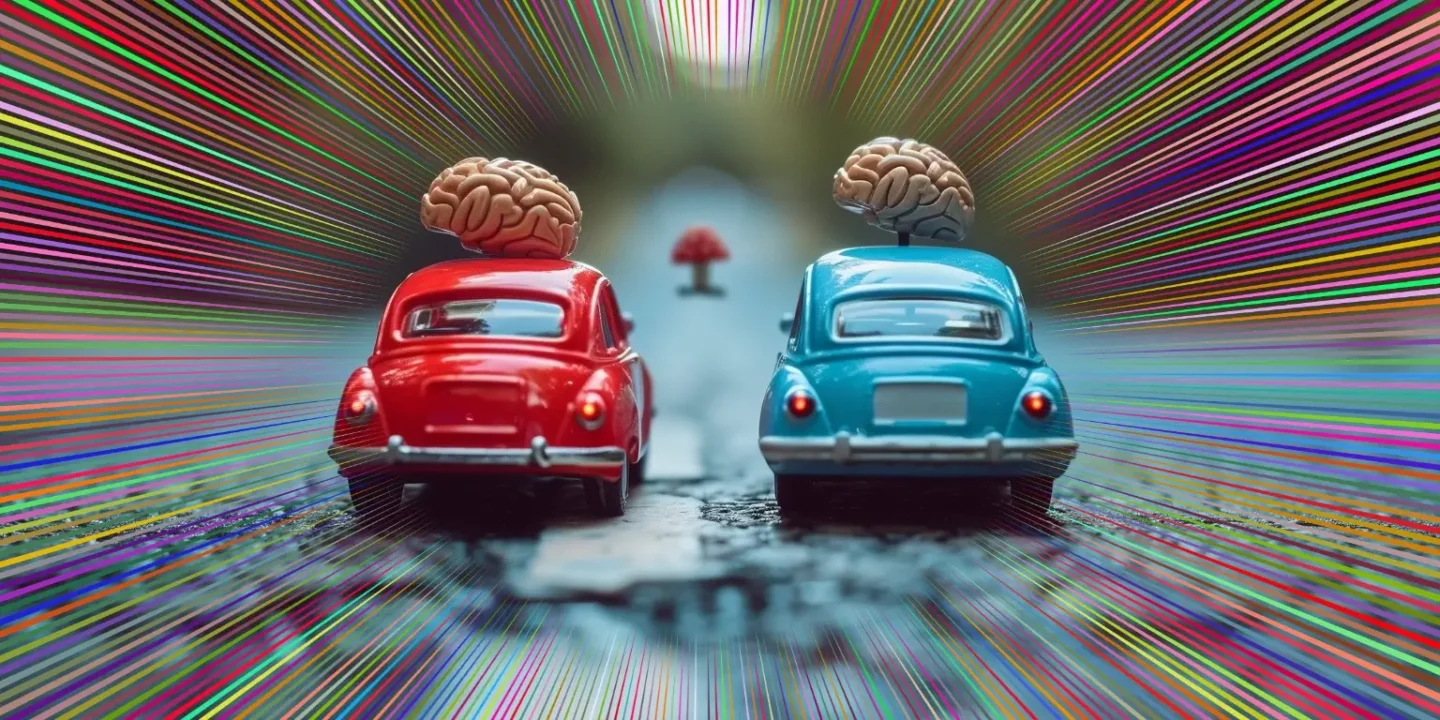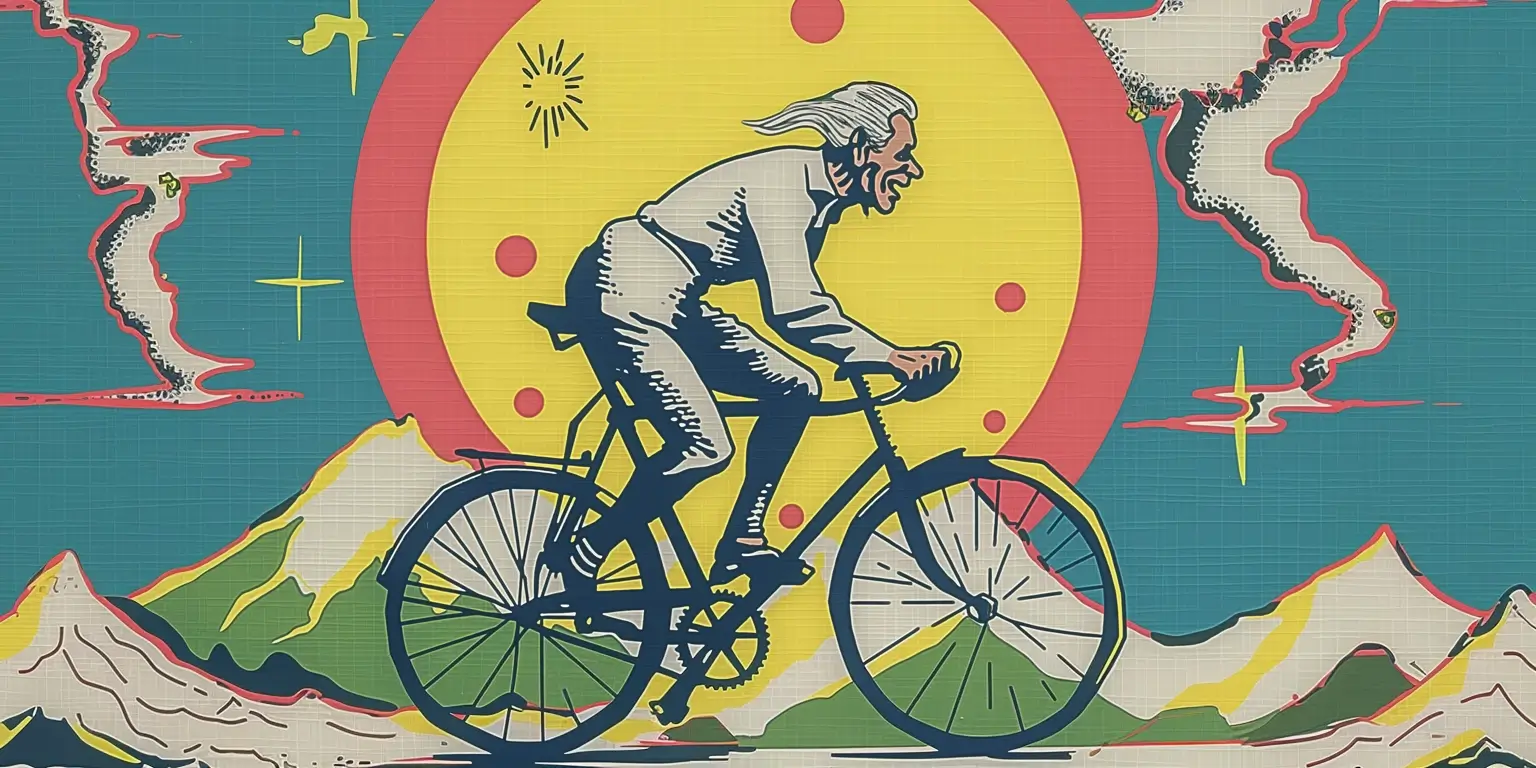It’s three hours until the 9:00 AM start of the 2023 USA Powerlifting Virginia Battle at Bull Run. Semi-pro powerlifter *Matthew S. has just taken approximately 50 ugs (micrograms) of Lysergic acid diethylamide (LSD). Unlike his competitors, Matthew isn’t downing energy drinks spiked with massive quantities of caffeine, taurine, or creatine. Instead, he’s having a simple breakfast of oatmeal, boiled eggs, orange slices, and a dash of psychedelics. This may sound odd, but Matthew’s story and some early science from a research team at the Department of Health, Human Performance, and Recreation; Exercise and Biochemical Nutrition Laboratory; Baylor University, indicates that you may be able to use psychedelics to enhance athletic performance, perhaps even more so that your run of the mill pre-workout.(1)
The study mentioned above was a meta-analysis of seven other pieces of published scientific literature. The analysis found that there appears to be some correlation between the use of psychedelics, such as LSD and psilocybin, and an increase in both physical and cognitive function. Though more research is needed to verify these findings.
The study mentioned above was a meta-analysis of seven other pieces of published scientific literature. The analysis found that there appears to be some correlation between the use of psychedelics, such as LSD and psilocybin, and an increase in both physical and cognitive function. Though more research is needed to verify these findings.
“When I first got into the sport, maybe ten years ago, I used all of the standard supplements and pre-workout stacks as everyone else,” says Matthew, “but that changed when I started microdosing.”
Keep Up with Uncensored Psychedelic Trends
Join our newsletter at Psychedelics Uncensored.
We respect and protect your privacy. By subscribing your info will be subject to our privacy policy . Unsubscribe easily at any time
A self-proclaimed “biohacker,” Matthew had been looking for new ways to boost his performance in and out of the gym. “Initially, I was microdosing for school,” he explains. “I left the Navy in 2014, enrolled in college, and I struggled. Learning has always been easy for me, but being a student-athlete made finding time and energy to keep up with school work and training hard.”
At the time, Matthew studied architecture while competing on an intramural powerlifting team and his school’s official water polo team, and it was difficult to balance studying and training. His mind and body were both drained.
“I was looking for anything that could give me an edge, and eventually, I read up on microdosing,” Matthew recounts.
Microdosing is the practice of taking very small and, ideally, sub-perceptual doses (meaning so low you aren’t meant to notice the psychoactive effects of the drug) of a psychedelic such as LSD or psilocybin. The intent is often to enhance cognitive performance, creativity, or perhaps even athletic performance.(1)
Keep Up with Psychedelic Trends
Get uncensored psychedelic news, events, and updates. Join Psychedelics Uncensored!
We respect and protect your privacy. By subscribing your info will be subject to our privacy policy . Unsubscribe easily at any time
Initially, Matthew says he noticed a boost in his ability to pay attention in class. After a few weeks of microdosing before class, he decided to try taking his LSD before his morning training routine.
“At first, I didn’t really notice a difference,” he recalls. “But one day, I decided to try a mini-dose (a dose high enough to feel some effects but still too low to experience hallucinogenic aspects). And that changed everything.”
Matthew says he noticed an “immediate and substantial” improvement in his ability to push through training sessions. Saying, “I could lift harder, run, and swim longer. The mental blocks I usually have when lifting or training hard just disappeared. That voice always saying ‘this is too much, that’s too heavy, I’m too tired’ was just gone.”
Of course, Matthew’s experience is anecdotal, but there is some science to back up his claims.
The Science of Microdosing Psychedelics to Enhance Athletic Performance

Research into the effects of psychedelics on athletic performance is still in its early stages, but preliminary findings suggest promising potential. The review study conducted by researchers at Baylor University (which, as mentioned, examined seven independent studies) explored the impact of microdoses of LSD on athletes’ endurance, strength, and mental clarity. Their hypothesis was grounded in the pharmacological properties of LSD, which acts primarily on serotonin receptors known to influence mood, cognition, and perception.
One of the key benefits identified in the study is an enhanced state of “flow,” a psychological condition in which a person is fully immersed in an activity with a heightened focus and enjoyment. This state is crucial for athletes such as Matthew, as it allows for greater concentration and reduced perception of effort, which can significantly improve performance. The Baylor study found that athletes under the influence of a microdose of LSD reported being able to stay in this flow state for longer periods compared to when they were sober.
Other key points from supporting studies include:(2, 3)
Additionally, the study highlighted improvements in the athletes’ mental resilience. LSD’s serotonergic activation (its effect on the serotonin system) reduces the cognitive fatigue that athletes often experience during long and strenuous workouts. This reduction in mental fatigue may allow athletes to maintain high performance levels throughout their sessions, potentially leading to better outcomes in both training and competitive environments.
Another aspect investigated by the research team was pain perception. LSD and other psychedelics have been noted for their analgesic (pain-reducing) effects, which may help athletes manage pain more effectively during and after intense physical exertion. This could be particularly beneficial in sports where injury and pain management are a constant challenge.(2, 3)
The Baylor researchers also considered the potential for psychedelics to aid in recovery. By promoting neuroplasticity—the brain’s ability to reorganize itself by forming new neural connections—LSD may help athletes recover from mental burnout and physical fatigue quicker than usual. This could mean shorter recovery times and improved readiness for subsequent training sessions or competitions.
The Future of Psychedelic in Sports

Matthew’s achievements at the Battle at Bull Run—securing first place in both the deadlift and squat competitions in his weight class and a close second in the bench press—underscore the potential benefits of microdosing psychedelics in competitive sports. However, it is important to note again that the science is still relatively new, and more research is needed.
“Psychedelics aren’t for everyone,” Matthew cautions.“But for me, LSD made a real difference not just in my sport but in my life. I think that these are tools that we can and should be able to use. Especially if you’re doing them in a safe and informed way, it’s your body and your consciousness, and I think everyone should have the right to explore its limits.”
The implications of such performance enhancements are interesting, although not fully proven. Athletes like Matthew, who experiment with microdosing, are pioneering a new frontier in sports science that could lead to more formalized research and, potentially, regulatory changes. However, there is a real need for focused, well-designed studies to validate anecdotal evidence with robust data.
(Editor’s Note: Currently, all psychedelics, including LSD, are illegal in the United States and are heavily restricted under the Schedule 1 List of Controlled Substances Act. However, the U.S. Anti-Doping Agency (USADA) does not currently list psychedelics as a prohibited substance in sports.)
(*Names have been changed to protect identities.)
Sources

1. Polito, V., & Stevenson, R. J. (2019). A systematic study of microdosing psychedelics. PLOS ONE, 14(2), e0211023. https://doi.org/10.1371/journal.pone.0211023
2. Machek, S. B. (2019). Psychedelics: Overlooked Clinical Tools with Unexplored Ergogenic Potential. Journal of Exercise and Nutrition, 2(3). https://journalofexerciseandnutrition.com/index.php/JEN/article/view/50/43
3. Schwenk, T. L. (1997). Psychoactive Drugs and Athletic Performance. The Physician and Sportsmedicine, 25(1), 32–46. https://doi.org/10.3810/psm.1997.01.1088
4. Canal, C. E. (2018). Serotonergic Psychedelics: Experimental Approaches for Assessing Mechanisms of Action. Handbook of Experimental Pharmacology, 252, 227–260. https://doi.org/10.1007/164_2018_107
5. El-Seedi HR, De Smet PA, Beck O, Possnert G, Bruhn JG. Prehistoric peyote use: alkaloid analysis and radiocarbon dating of archaeological specimens of Lophophora from Texas. J Ethnopharmacol. 2005;101(1-3):238-242.
6. Goel, A., Rai, Y., Shayan Sivadas, Diep, C., Clarke, H., Harsha Shanthanna, & Ladha, K. (2023). Use of Psychedelics for Pain: A Scoping Review. Anesthesiology, 139(4), 523–536. https://doi.org/10.1097/aln.0000000000004673
This material is not intended as a replacement or substitute for any legal or medical advice. Always consult a medical professional about your health needs. Psychedelics are widely illegal in the United States, and readers should always be informed about local, state, and federal regulations regarding psychedelics or other drugs.

 David Connell
David Connell



 Jason Najum
Jason Najum
